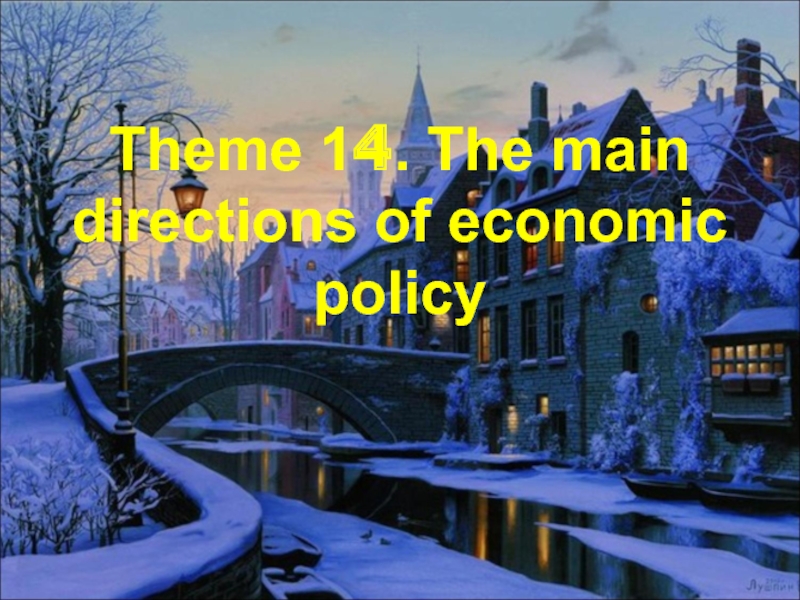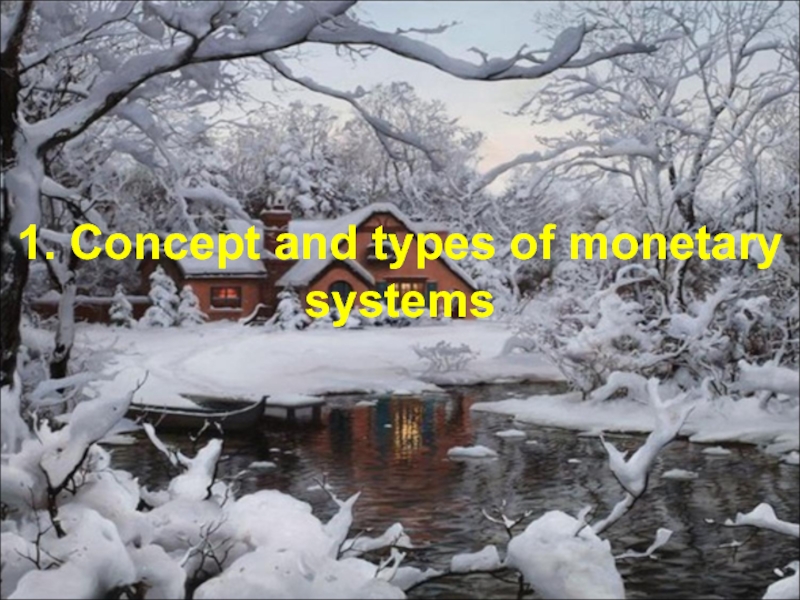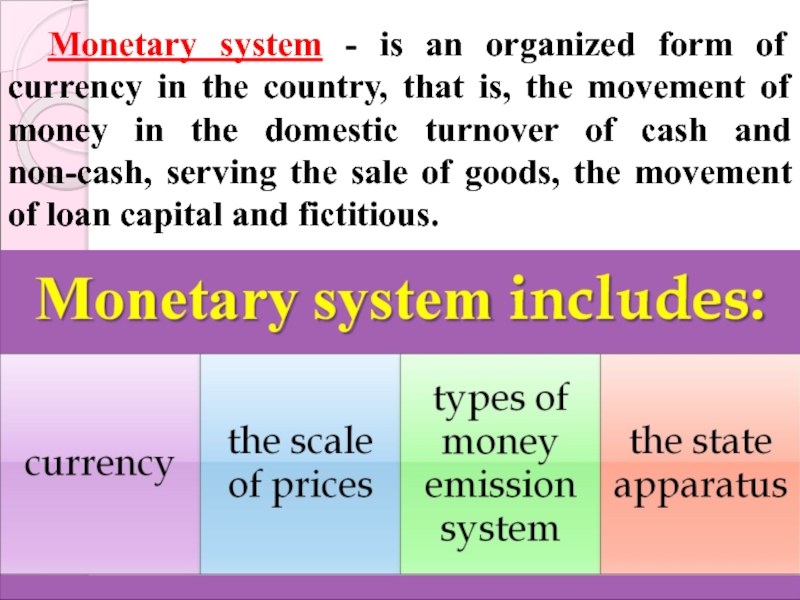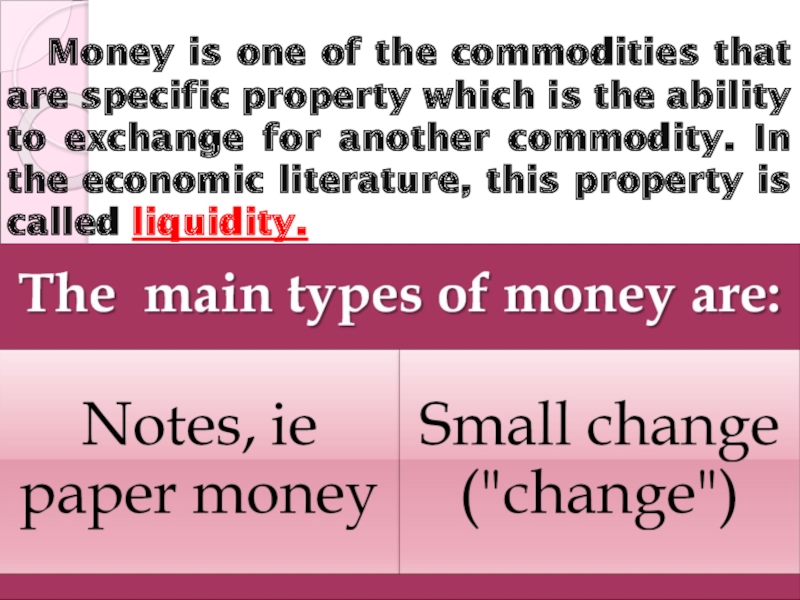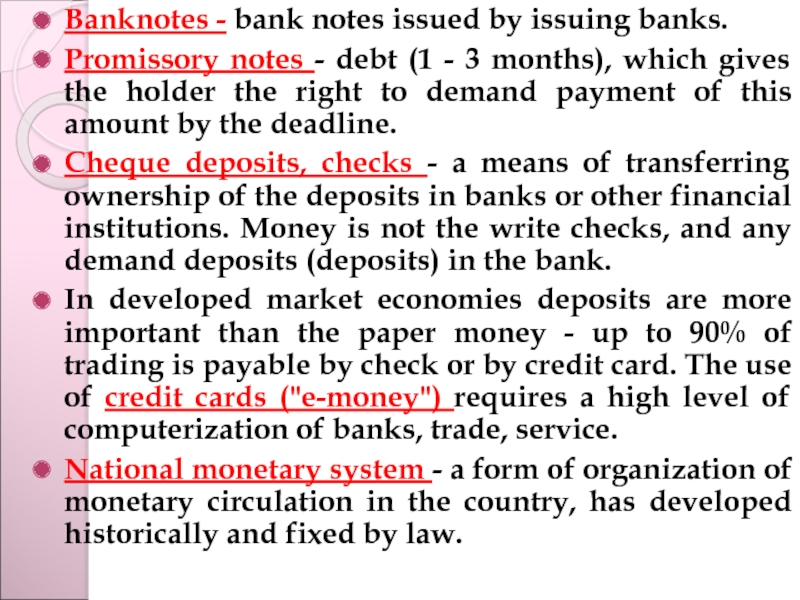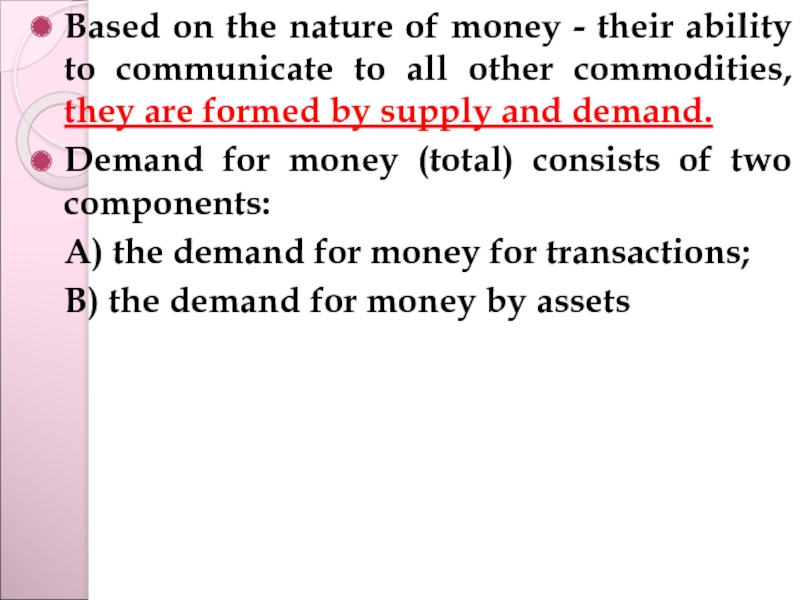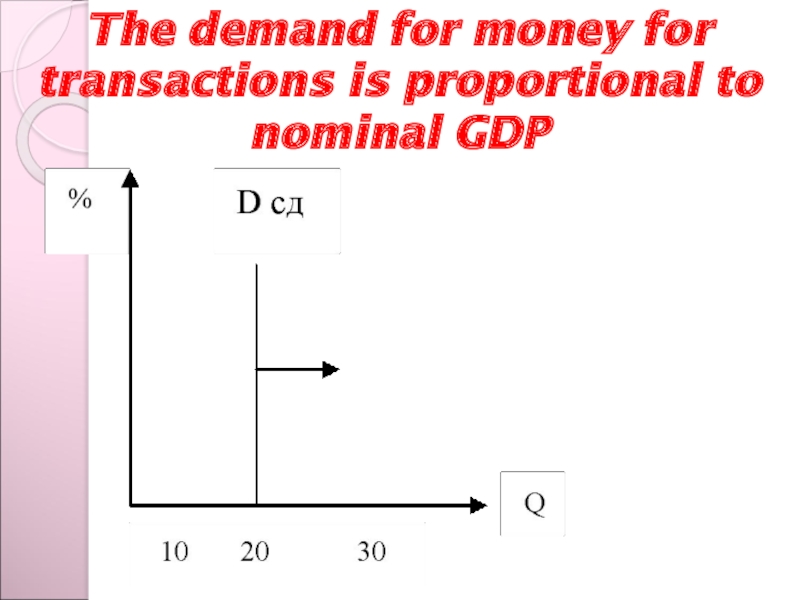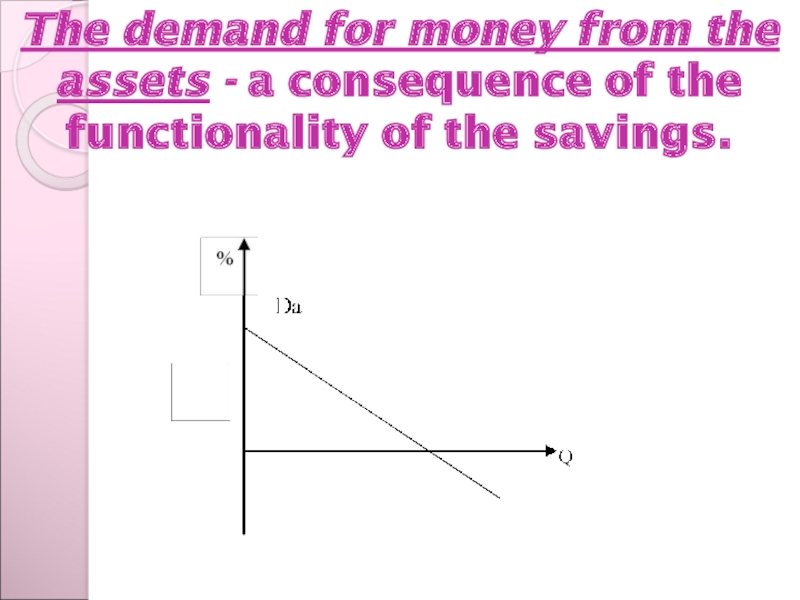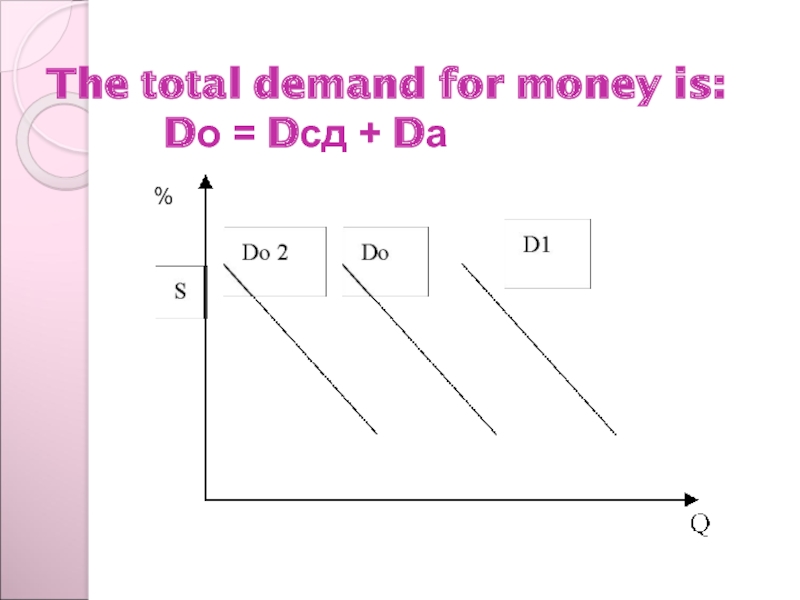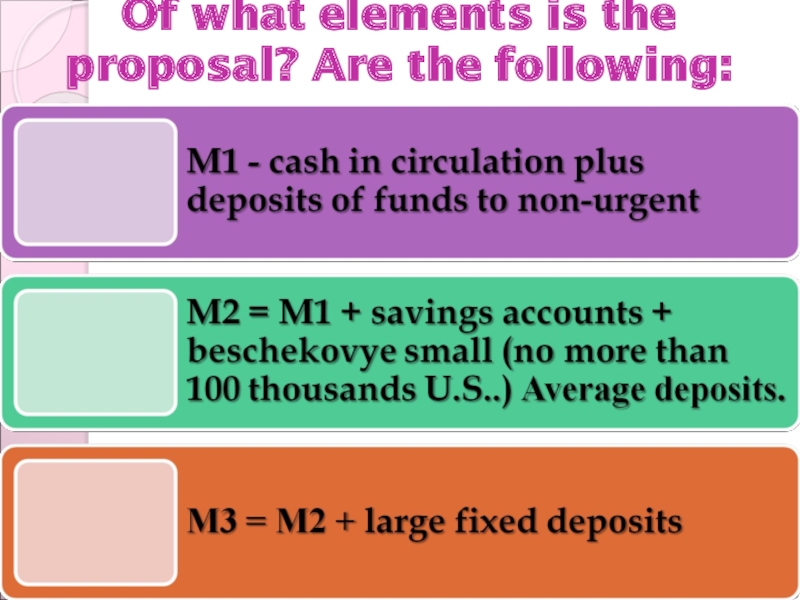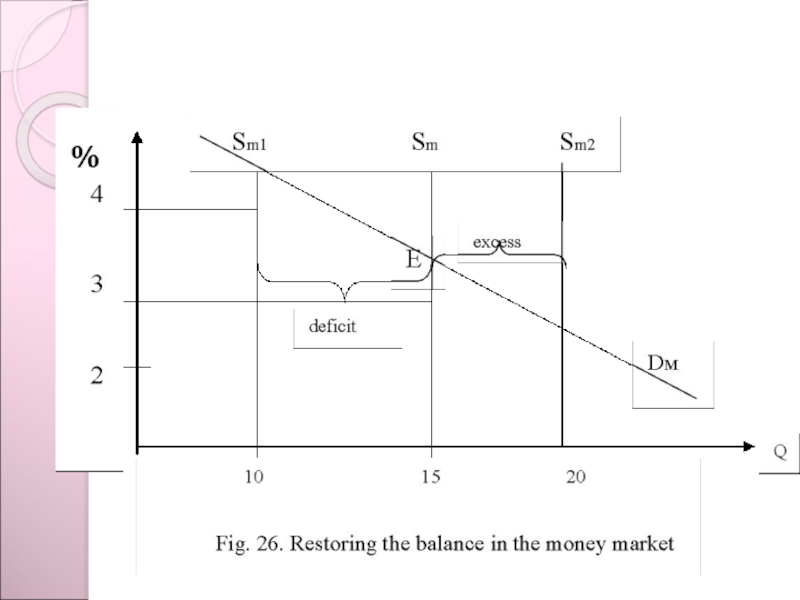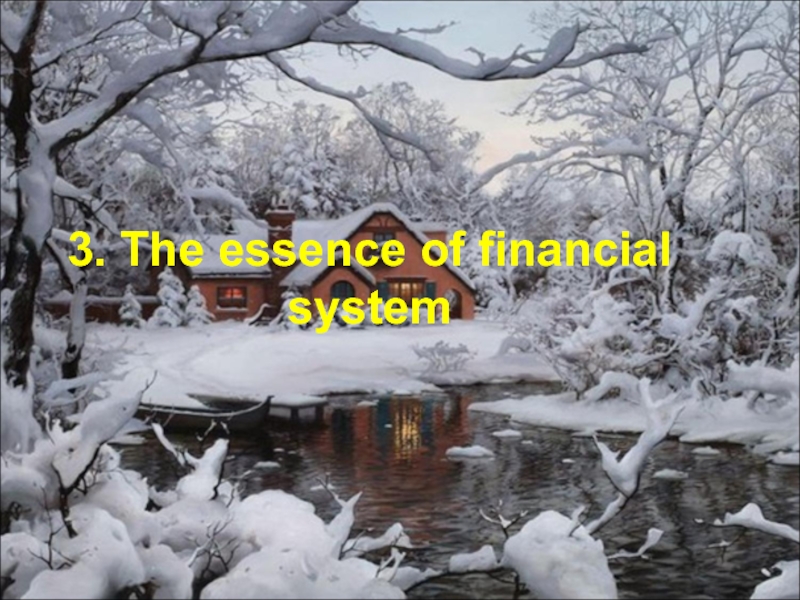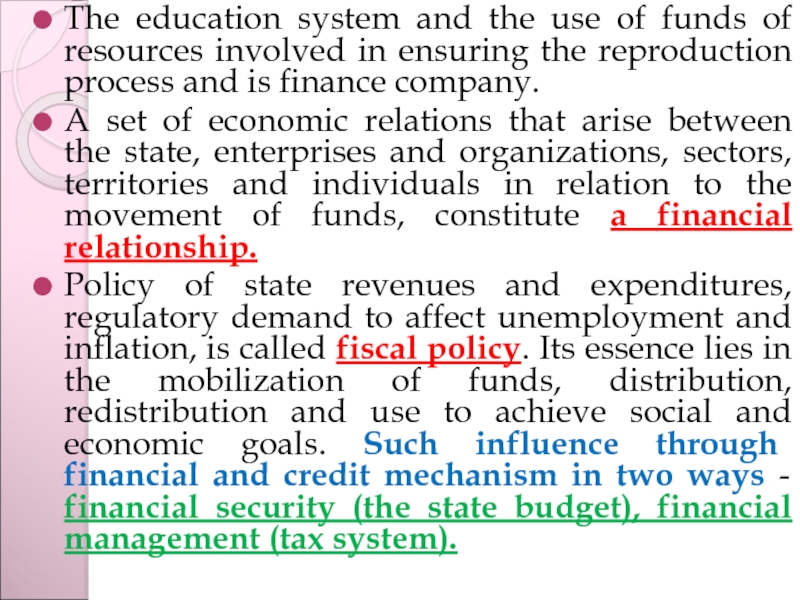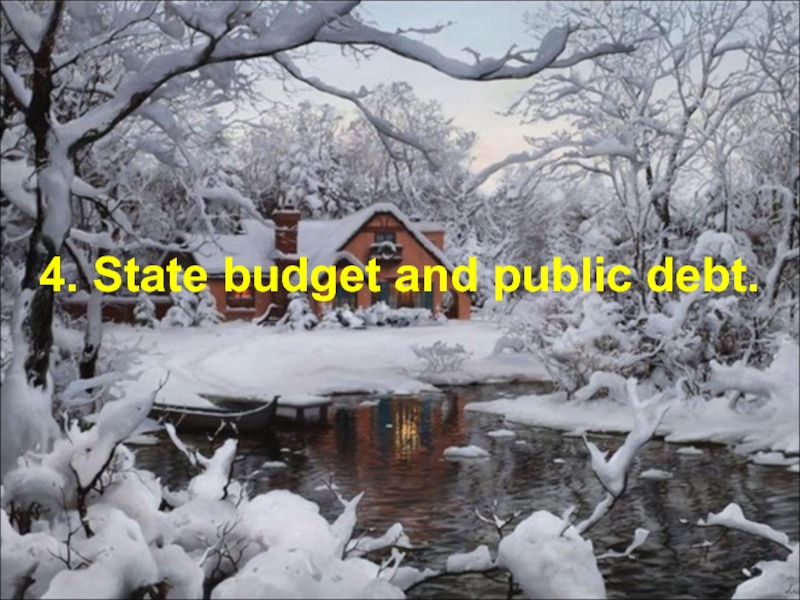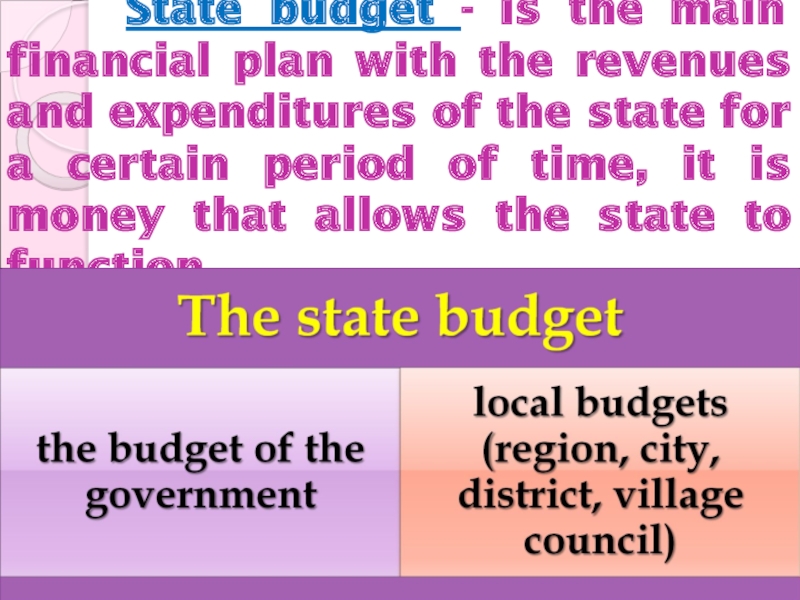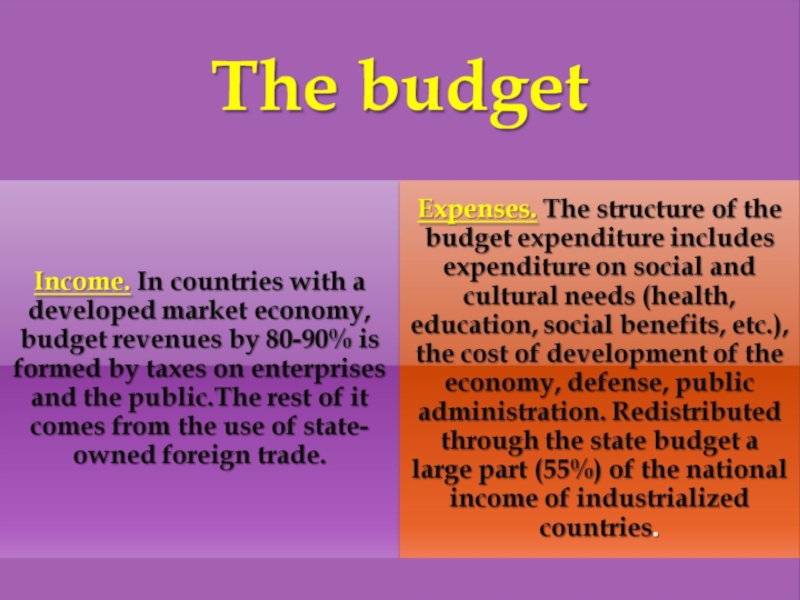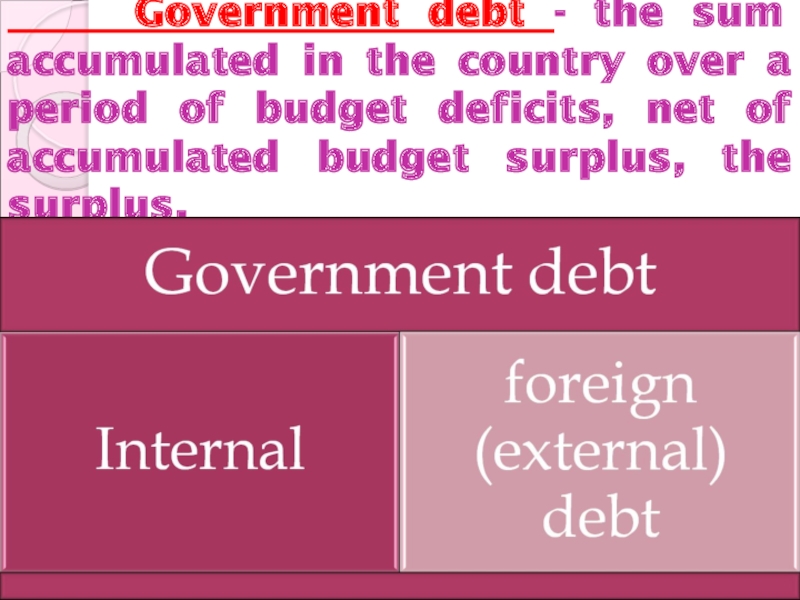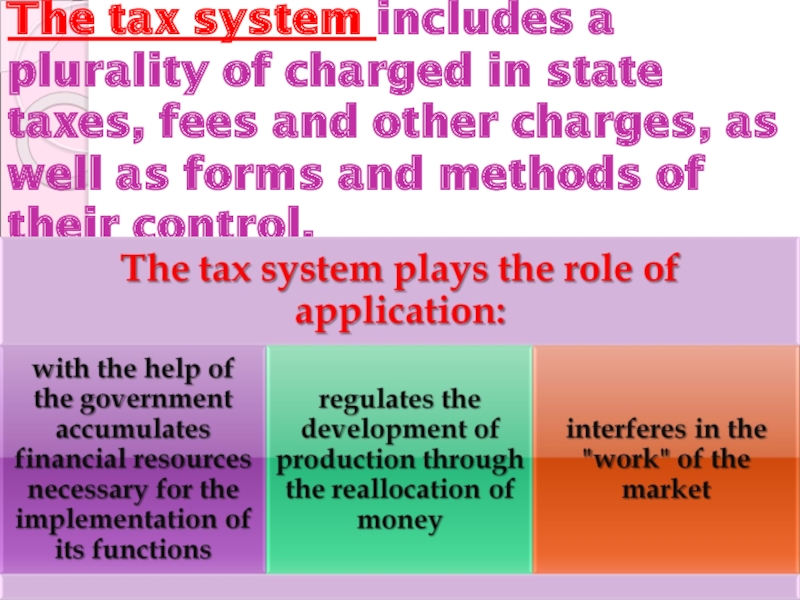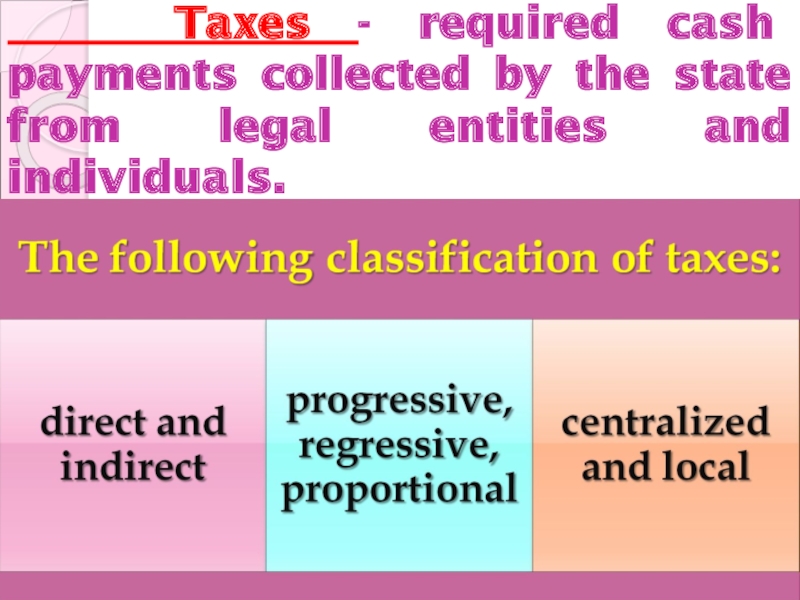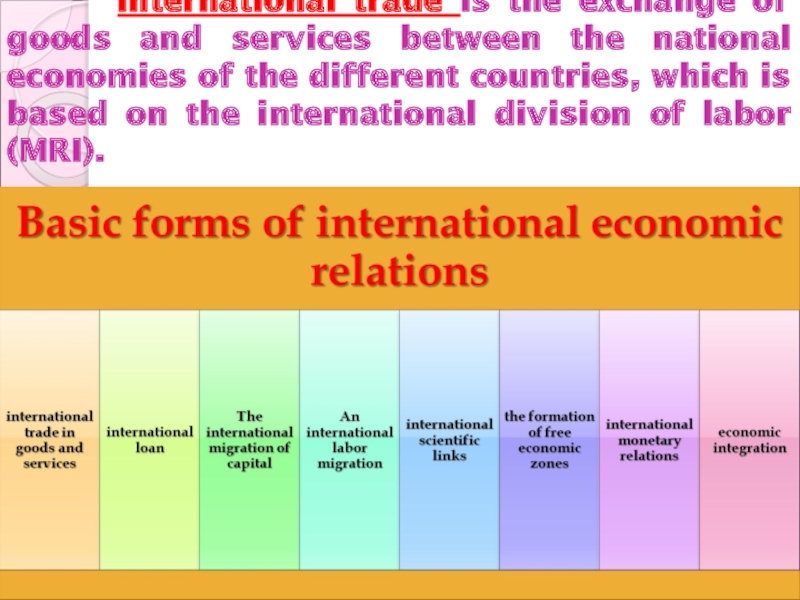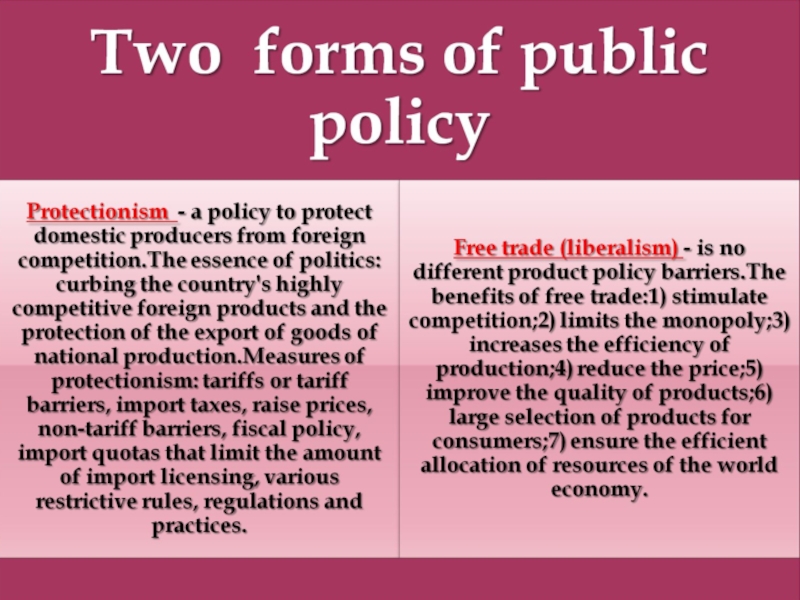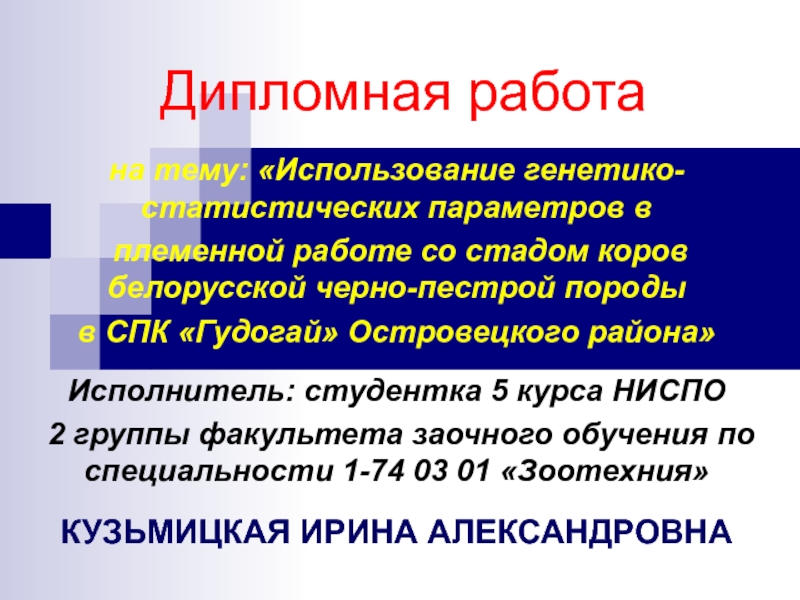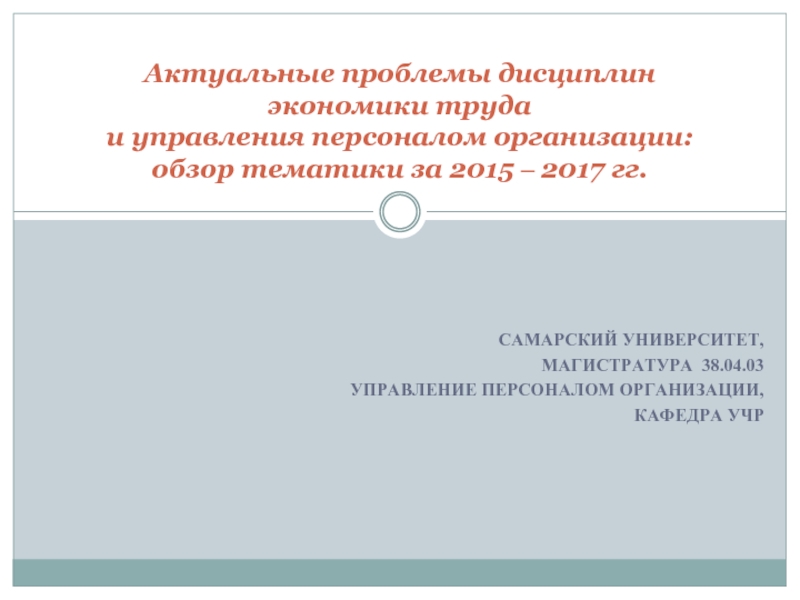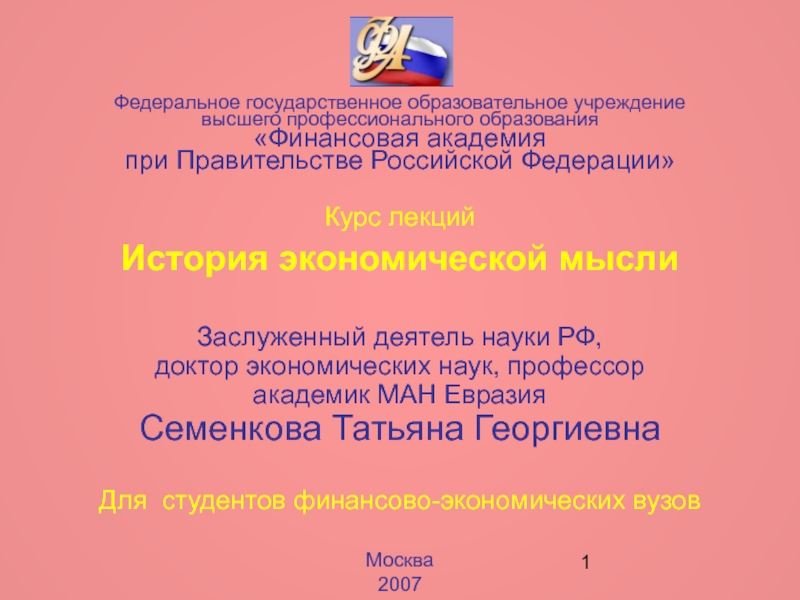- Главная
- Разное
- Дизайн
- Бизнес и предпринимательство
- Аналитика
- Образование
- Развлечения
- Красота и здоровье
- Финансы
- Государство
- Путешествия
- Спорт
- Недвижимость
- Армия
- Графика
- Культурология
- Еда и кулинария
- Лингвистика
- Английский язык
- Астрономия
- Алгебра
- Биология
- География
- Детские презентации
- Информатика
- История
- Литература
- Маркетинг
- Математика
- Медицина
- Менеджмент
- Музыка
- МХК
- Немецкий язык
- ОБЖ
- Обществознание
- Окружающий мир
- Педагогика
- Русский язык
- Технология
- Физика
- Философия
- Химия
- Шаблоны, картинки для презентаций
- Экология
- Экономика
- Юриспруденция
The main directions of economic policy презентация
Содержание
- 1. The main directions of economic policy
- 2. 1. Concept and types of monetary systems
- 3. Monetary system - is an organized form
- 4. Money is one of the commodities that
- 5. Banknotes - bank notes issued by issuing
- 6. 2. The demand for money and the money supply
- 7. Based on the nature of money -
- 8. The demand for money for transactions is proportional to nominal GDP
- 9. The demand for money from the assets
- 10. The total demand for money is:
- 11. Of what elements is the proposal? Are the following:
- 13. 3. The essence of financial system
- 14. The education system and the use of
- 15. 4. State budget and public debt.
- 16. State budget - is
- 18. Government debt - the
- 19. 5. The principles and forms of taxation
- 20. The tax system includes a plurality of
- 21. Taxes - required cash payments
- 22. 6.International relationships: the nature, forms
- 23. International trade is
Слайд 3Monetary system - is an organized form of currency in the
country, that is, the movement of money in the domestic turnover of cash and non-cash, serving the sale of goods, the movement of loan capital and fictitious.
Слайд 4Money is one of the commodities that are specific property which
is the ability to exchange for another commodity. In the economic literature, this property is called liquidity.
Слайд 5Banknotes - bank notes issued by issuing banks.
Promissory notes - debt
(1 - 3 months), which gives the holder the right to demand payment of this amount by the deadline.
Cheque deposits, checks - a means of transferring ownership of the deposits in banks or other financial institutions. Money is not the write checks, and any demand deposits (deposits) in the bank.
In developed market economies deposits are more important than the paper money - up to 90% of trading is payable by check or by credit card. The use of credit cards ("e-money") requires a high level of computerization of banks, trade, service.
National monetary system - a form of organization of monetary circulation in the country, has developed historically and fixed by law.
Cheque deposits, checks - a means of transferring ownership of the deposits in banks or other financial institutions. Money is not the write checks, and any demand deposits (deposits) in the bank.
In developed market economies deposits are more important than the paper money - up to 90% of trading is payable by check or by credit card. The use of credit cards ("e-money") requires a high level of computerization of banks, trade, service.
National monetary system - a form of organization of monetary circulation in the country, has developed historically and fixed by law.
Слайд 7Based on the nature of money - their ability to communicate
to all other commodities, they are formed by supply and demand.
Demand for money (total) consists of two components:
A) the demand for money for transactions;
B) the demand for money by assets
Demand for money (total) consists of two components:
A) the demand for money for transactions;
B) the demand for money by assets
Слайд 14The education system and the use of funds of resources involved
in ensuring the reproduction process and is finance company.
A set of economic relations that arise between the state, enterprises and organizations, sectors, territories and individuals in relation to the movement of funds, constitute a financial relationship.
Policy of state revenues and expenditures, regulatory demand to affect unemployment and inflation, is called fiscal policy. Its essence lies in the mobilization of funds, distribution, redistribution and use to achieve social and economic goals. Such influence through financial and credit mechanism in two ways - financial security (the state budget), financial management (tax system).
A set of economic relations that arise between the state, enterprises and organizations, sectors, territories and individuals in relation to the movement of funds, constitute a financial relationship.
Policy of state revenues and expenditures, regulatory demand to affect unemployment and inflation, is called fiscal policy. Its essence lies in the mobilization of funds, distribution, redistribution and use to achieve social and economic goals. Such influence through financial and credit mechanism in two ways - financial security (the state budget), financial management (tax system).
Слайд 16 State budget - is the main financial plan
with the revenues and expenditures of the state for a certain period of time, it is money that allows the state to function.
Слайд 18 Government debt - the sum accumulated in the
country over a period of budget deficits, net of accumulated budget surplus, the surplus.
Слайд 20The tax system includes a plurality of charged in state taxes,
fees and other charges, as well as forms and methods of their control.
Слайд 23 International trade is the exchange of goods
and services between the national economies of the different countries, which is based on the international division of labor (MRI).
